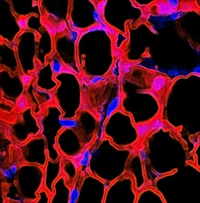Justin Rochford, Anke Roelofs & Cosimo De Bari

We now know that fat tissue in different parts of the body, and the fat cells it is made from, can behave very differently. Some fat cells are beneficial, for instance by protecting organs from lipid accumulation, whereas others are associated with metabolic disease and are harmful. Fat cells are made from stem cells and it is really important to work out which stem cells make which fat cells. If we could find ways to make more of the good fat cells, and less of the bad, this could make a big difference to health.
In this work, we have found a new type of stem cell that only makes certain fat cells and not others. This includes the fat found in the joints as well as other specific places in the body. At the moment, we know very little about these fat cells and what they might do in diseases caused by obesity and conditions that affect the joints, such as osteoarthritis.
We want to find out exactly what fat tissue these stem cells make and work out if it is good or bad. This will tell us whether they could be used in stem cell therapy, or if we could use drugs to make more or less of only these fat cells. This could be an exciting new treatment, either for people who can’t make fat properly, people with joint disease, or for overweight people who need fitter, healthier fat cells.
